Kai-Lang Yao
GNNFormer: A Graph-based Framework for Cytopathology Report Generation
Mar 17, 2023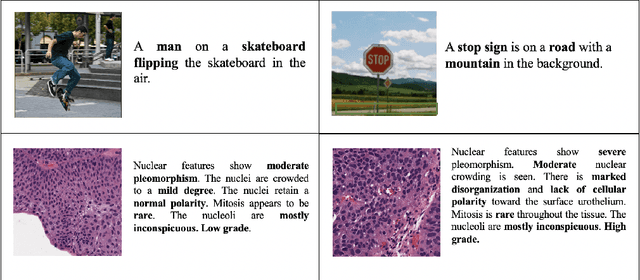

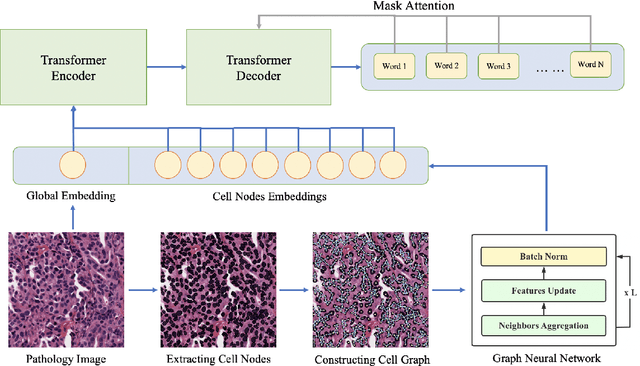
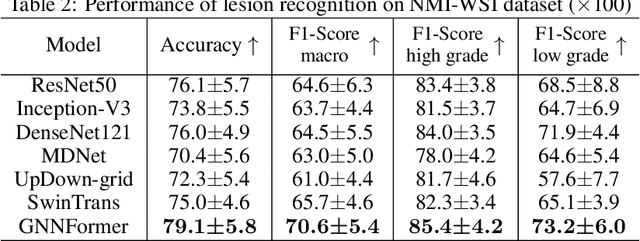
Abstract:Cytopathology report generation is a necessary step for the standardized examination of pathology images. However, manually writing detailed reports brings heavy workloads for pathologists. To improve efficiency, some existing works have studied automatic generation of cytopathology reports, mainly by applying image caption generation frameworks with visual encoders originally proposed for natural images. A common weakness of these works is that they do not explicitly model the structural information among cells, which is a key feature of pathology images and provides significant information for making diagnoses. In this paper, we propose a novel graph-based framework called GNNFormer, which seamlessly integrates graph neural network (GNN) and Transformer into the same framework, for cytopathology report generation. To the best of our knowledge, GNNFormer is the first report generation method that explicitly models the structural information among cells in pathology images. It also effectively fuses structural information among cells, fine-grained morphology features of cells and background features to generate high-quality reports. Experimental results on the NMI-WSI dataset show that GNNFormer can outperform other state-of-the-art baselines.
Asymmetric Learning for Graph Neural Network based Link Prediction
Mar 01, 2023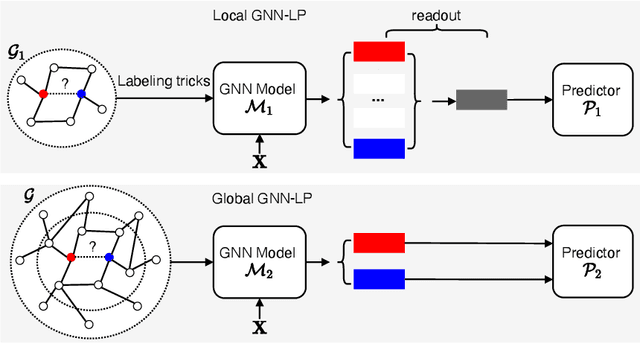
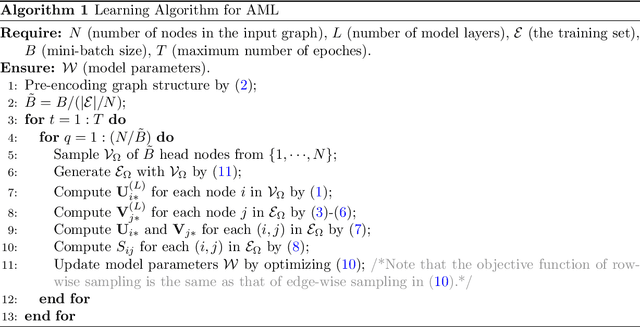
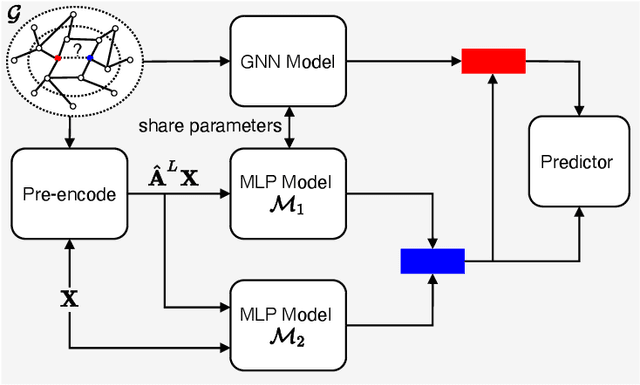
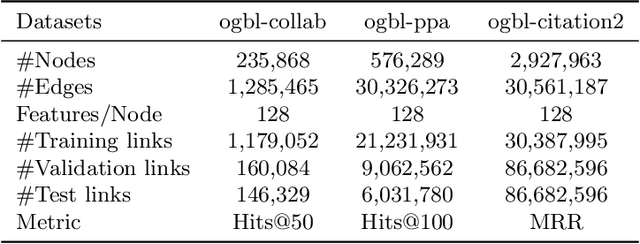
Abstract:Link prediction is a fundamental problem in many graph based applications, such as protein-protein interaction prediction. Graph neural network (GNN) has recently been widely used for link prediction. However, existing GNN based link prediction (GNN-LP) methods suffer from scalability problem during training for large-scale graphs, which has received little attention by researchers. In this paper, we first give computation complexity analysis of existing GNN-LP methods, which reveals that the scalability problem stems from their symmetric learning strategy adopting the same class of GNN models to learn representation for both head and tail nodes. Then we propose a novel method, called asymmetric learning (AML), for GNN-LP. The main idea of AML is to adopt a GNN model for learning head node representation while using a multi-layer perceptron (MLP) model for learning tail node representation. Furthermore, AML proposes a row-wise sampling strategy to generate mini-batch for training, which is a necessary component to make the asymmetric learning strategy work for training speedup. To the best of our knowledge, AML is the first GNN-LP method adopting an asymmetric learning strategy for node representation learning. Experiments on three real large-scale datasets show that AML is 1.7X~7.3X faster in training than baselines with a symmetric learning strategy, while having almost no accuracy loss.
Collaborative Self-Attention for Recommender Systems
May 27, 2019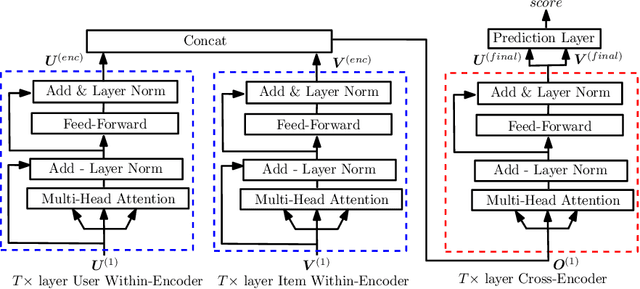
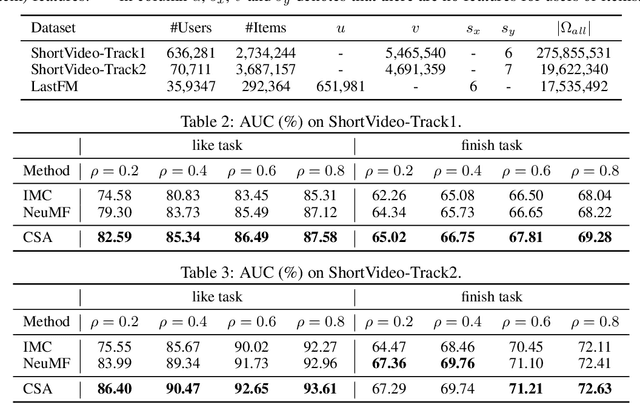
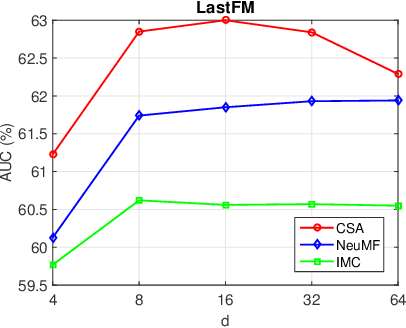
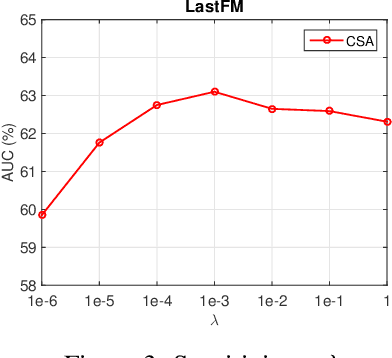
Abstract:Recommender systems (RS), which have been an essential part in a wide range of applications, can be formulated as a matrix completion (MC) problem. To boost the performance of MC, matrix completion with side information, called inductive matrix completion (IMC), was further proposed. In real applications, the factorized version of IMC is more favored due to its efficiency of optimization and implementation. Regarding the factorized version, traditional IMC method can be interpreted as learning an individual representation for each feature, which is independent from each other. Moreover, representations for the same features are shared across all users/items. However, the independent characteristic for features and shared characteristic for the same features across all users/items may limit the expressiveness of the model. The limitation also exists in variants of IMC, such as deep learning based IMC models. To break the limitation, we generalize recent advances of self-attention mechanism to IMC and propose a context-aware model called collaborative self-attention (CSA), which can jointly learn context-aware representations for features and perform inductive matrix completion process. Extensive experiments on three large-scale datasets from real RS applications demonstrate effectiveness of CSA.
Convolutional Geometric Matrix Completion
Mar 02, 2018

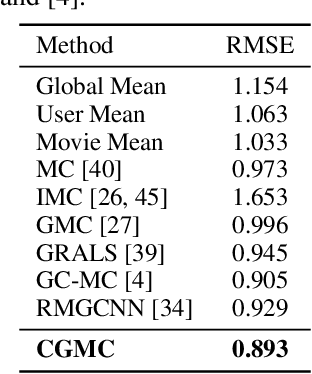
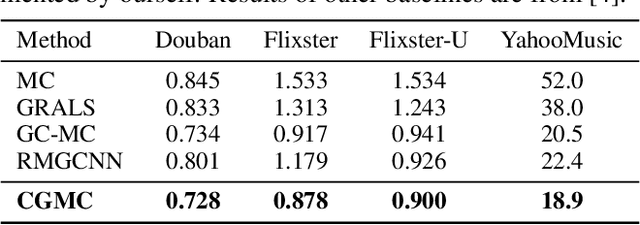
Abstract:Geometric matrix completion~(GMC) has been proposed for recommendation by integrating the relationship~(link) graphs among users/items into matrix completion~(MC) . Traditional \mbox{GMC} methods typically adopt graph regularization to impose smoothness priors for \mbox{MC}. Recently, geometric deep learning on graphs~(\mbox{GDLG}) is proposed to solve the GMC problem, showing better performance than existing GMC methods including traditional graph regularization based methods. To the best of our knowledge, there exists only one GDLG method for GMC, which is called \mbox{RMGCNN}. RMGCNN combines graph convolutional network~(GCN) and recurrent neural network~(RNN) together for GMC. In the original work of RMGCNN, RMGCNN demonstrates better performance than pure GCN-based method. In this paper, we propose a new \mbox{GMC} method, called \underline{c}onvolutional \underline{g}eometric \underline{m}atrix \underline{c}ompletion~(CGMC), for recommendation with graphs among users/items. CGMC is a pure GCN-based method with a newly designed graph convolutional network. Experimental results on real datasets show that CGMC can outperform other state-of-the-art methods including RMGCNN.
 Add to Chrome
Add to Chrome Add to Firefox
Add to Firefox Add to Edge
Add to Edge